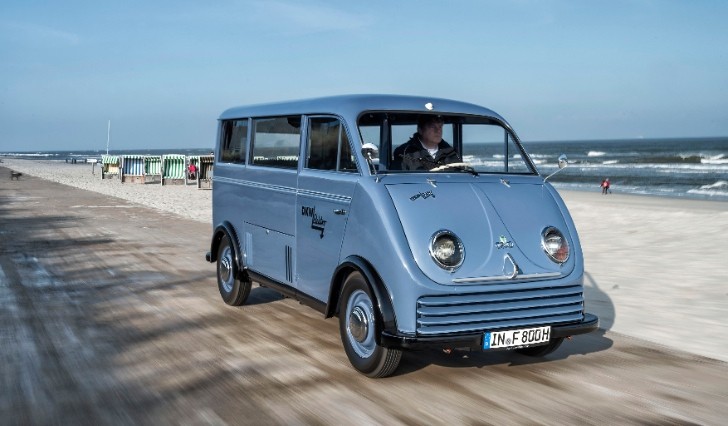There's a reason why Audi has a badge with four rings and that's because back in the days when it was called Auto Union, there were four different brands forming this conglomerate: Audi, DKW, Horch and Wanderer. The company is steeped in tradition and just like Porsche, they can claim they built electric cars before it was cool.
With every new model coming out in the next years being expected to have some sort of electrification system, Audi Tradition has restored a piece of history, one of only two remaining DKR electric Schnellaster models.
As the story goes, between 1955 and 1962, Auto Union GmbH assembed about 100 units of the DKW Schnellaster in Ingolstadt. They were sold mainly to energy companies, public utility firms and battery manufacturers.
The DKW electric car was fitted with a a 5 kW motor, which is horsepower would be just under 7 hp, underpowered by today's standards. The electricity came from two lead-acid battery packs mounted laterally in boxes. They delivered 80 volts of power and had a capacity of 200 Ampere-hours, enough for a driving distance of 80 kilometers.
With a top speed of 40 km/h, it was only suited for short journeys inside city limits. The car that was restored, one of only two existing examples, was used on the North Sea island Wangerooge, where internal combustion engines are strictly prohibited. After several years of painstaking restoration, it returned to its home for some stunning photo opportunities.
These were tough times in Germany, when transportation simply wasn't available and the economy was struggling. A pre-war two-cylinder engine was used, with the 700cc two-stroke unit believed to have produced only 20 hp. Later on in the lifecycle, they developed a 3-cylinder 900cc unit with 32 hp.
As the story goes, between 1955 and 1962, Auto Union GmbH assembed about 100 units of the DKW Schnellaster in Ingolstadt. They were sold mainly to energy companies, public utility firms and battery manufacturers.
The DKW electric car was fitted with a a 5 kW motor, which is horsepower would be just under 7 hp, underpowered by today's standards. The electricity came from two lead-acid battery packs mounted laterally in boxes. They delivered 80 volts of power and had a capacity of 200 Ampere-hours, enough for a driving distance of 80 kilometers.
With a top speed of 40 km/h, it was only suited for short journeys inside city limits. The car that was restored, one of only two existing examples, was used on the North Sea island Wangerooge, where internal combustion engines are strictly prohibited. After several years of painstaking restoration, it returned to its home for some stunning photo opportunities.
DKW Schnellaster facts
The name of this archaic vehicle translates from German to English as Rapid Transporter and is considered by many to be the precursor of the modern minivan.These were tough times in Germany, when transportation simply wasn't available and the economy was struggling. A pre-war two-cylinder engine was used, with the 700cc two-stroke unit believed to have produced only 20 hp. Later on in the lifecycle, they developed a 3-cylinder 900cc unit with 32 hp.




